The last issue of Hulk left us in a cliffhanger: after reaching Maise Brewn personally, Jennifer Walters learns in the worst possible way that her Inhuman client was behind the shadow monstrosity that murdered Mr. Tick. The Hulk can handle shadow monstrosities, but Jen Walters? Not so much. Yet the Hulk is not exactly available right now.
We learn more about this in the opening scene of this issue, with Jennifer in the hospital shortly after waking up from her coma. She’s already in human form and already very much aware of her cousin Bruce Banner’s death. In her inner monologue, Jen wonders when did she realize that her life would never be the same anymore.
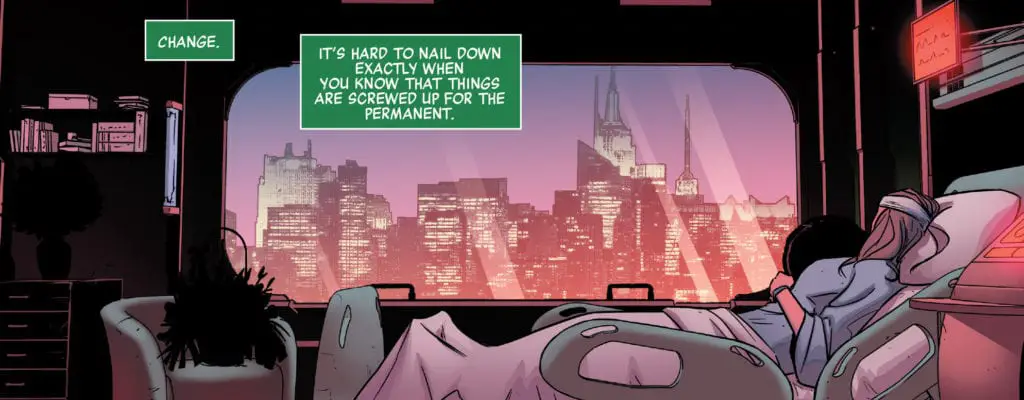
Carol Danvers is there too, offering support and trying to make amends. Jen insists she’s gonna be okay. The whole hospital scene feels a reference to Civil War II #4 when Carol was the one to tell Jen the news of Bruce’s death.
As soon as Captain Marvel leaves, Jen has a vision of Bruce Banner’s not-really-a-ghost. She’s feeling bad because she was supposed to be a superhero and right now she’s not being very super or very heroic, but Bruce tells her everything is going to be okay. Except it won’t, because her vision changes to Bruce’s death by arrow in the head, prompting a violent and nasty Hulk transformation. That was when, Jen ponders, she realized something had changed.
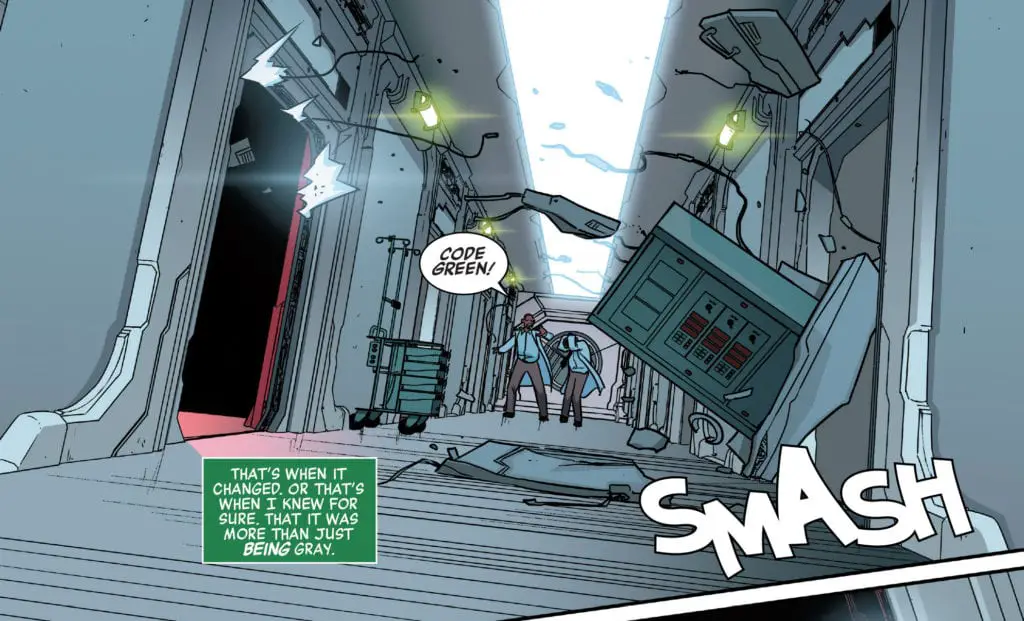
Present time, and things are most definitely not okay. Maise Brewn is using her gigantic black gooey creature to kick Jen’s butt. She corners Jen at the rooftop of her building, insisting she had no other choice. Once her partner attacked her, she explains, she realized the world is a terrible place and there’s badness in everyone. So she needs this thing to protect her, to make her feel safe against this awful world, so she helped the creature grow.
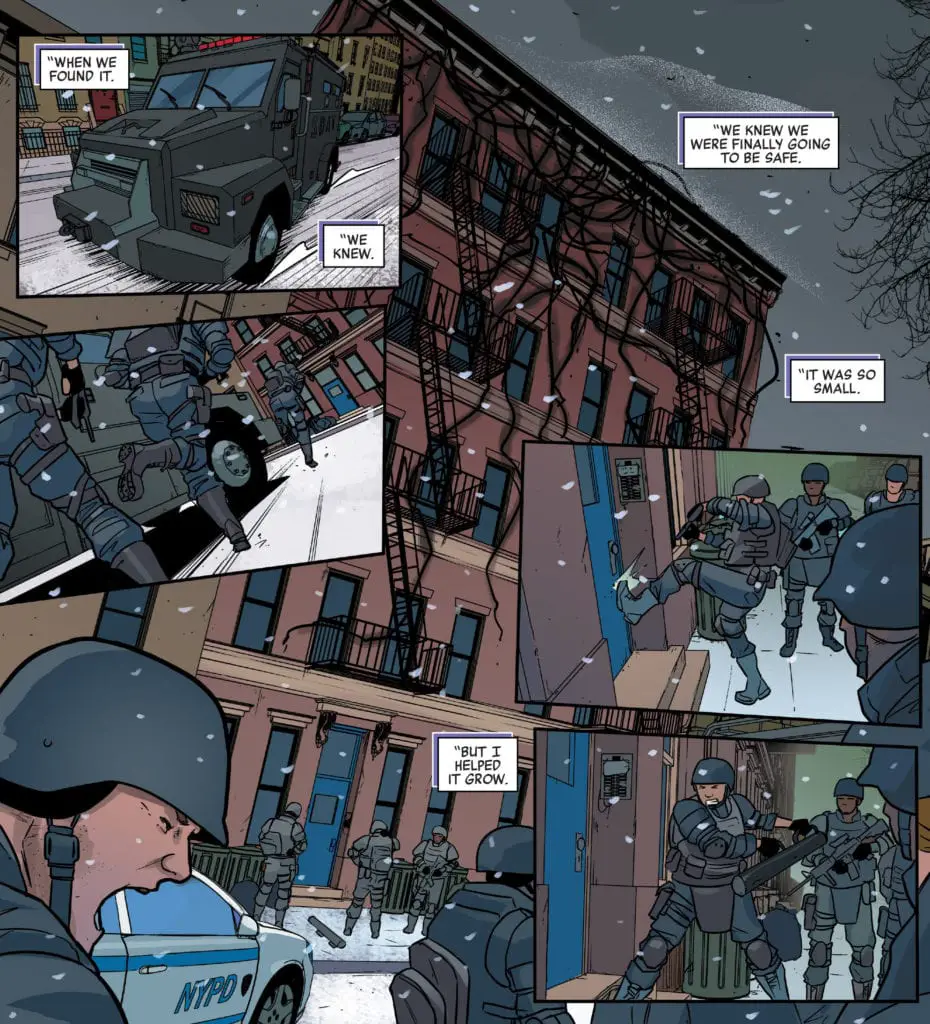
Maise is not alone in her murderous intents: the other residents of the building appear to be as frightened and as frightening as she is. They insist this is their only protection and their only hope. Jen tries to argue that you can’t just black-gooey-monster your problems away, and there’s a lot of good in this world too. Yet, as Maise points out, she doesn’t really believe in that anymore, does she?
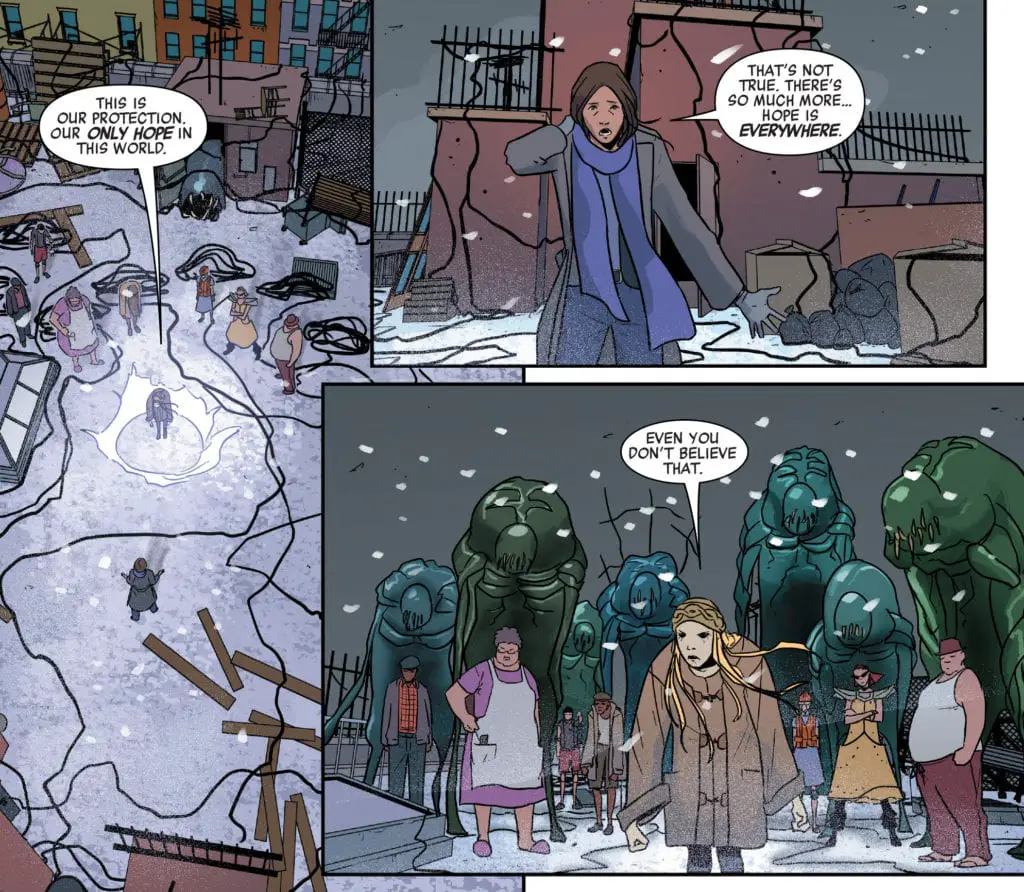
Jen knows she needs to change. She needs to be the Hulk again. Yet she can’t make herself change, even as she’s being crushed by Maise’s monster. She then remembers Bruce’s words: “everything’s going to be okay” and… no. She’s not okay, nobody here is okay, none of this is okay. She understands this now, as she begins turning into the Hulk once more.
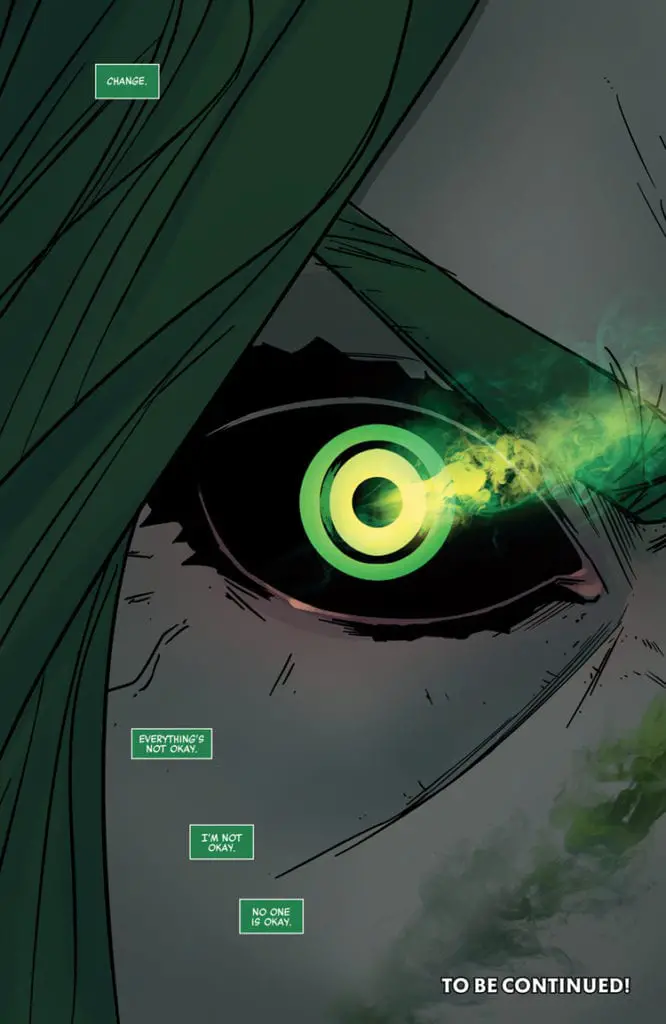
…and we’re left here. Next issue sounds promising, doesn’t it?
It’s great to see Jen finally becoming the Hulk again. We had five issues with only hints of a hulking out and no actual Hulk in sight, but that built the emotional foundation for this moment. We know this is huge for her, regardless of the outcome. We’ve seen how much she’s struggling with it.
And it’s not just about the transformation itself, but what will this mean for Jen afterward. How will this affect her, how will this change her, effectively, once it happens? I’m excited to see that.
The Hulk is a symbol of change. Not just the obvious physical transformation, but also an internal change. It’s about the changes that we don’t want and they happen anyway and now we have to deal with them. What’s a bigger example of that than trauma? As I’ve said before, being the Hulk is deeply connected to Jennifer’s trauma, so her struggles with this part of her identity make sense. It’s interesting to see her possibly finding strength in it again. Becoming the Hulk is the change she fears, but it’s also a change she needs. The world has changed, so she must change too, to find herself a new place in it.
So far the whole Deconstructed arc does an excellent job conveying that nothing will ever be the same for Jen. Something has changed, something that matters, and whoever Jennifer that comes out of this will be a different hero. Yet comic books are infamous for their impermanence, so I wonder how future She-Hulk stories will incorporate Jen’s traumatic experiences and the events of this arc.
Speaking of which, can we take a moment to appreciate how wonderfully isolated this series is? Despite hinging on the events of Civil War II, the beginning of this arc is a great jumping point for new readers. I’m sure I’m missing a lot of references and easter eggs, but it doesn’t require a lot of comic book knowledge to appreciate this story and to be invested in it. Also I have very little interest in that thing Marvel is doing right now, so I’m glad it’s not affecting this series. Jen’s current arc is a very internal journey and it would lose a lot of its touching strength if it were caught up by some major event.
Even the external threats Jen faces are just an extension of her inner conflicts. Maise is perhaps too determined to kill Jen—I can understand where she’s coming from and I’m aware she’s not exactly in her most reasonable self, but her intense change of heart was a bit too fast for my taste, especially in a book that so far has been building everything up so carefully. It’s a minor nitpick, though, because Maise’s main job in this story is to be a foil for Jen’s own trauma and she’s doing that job very well.
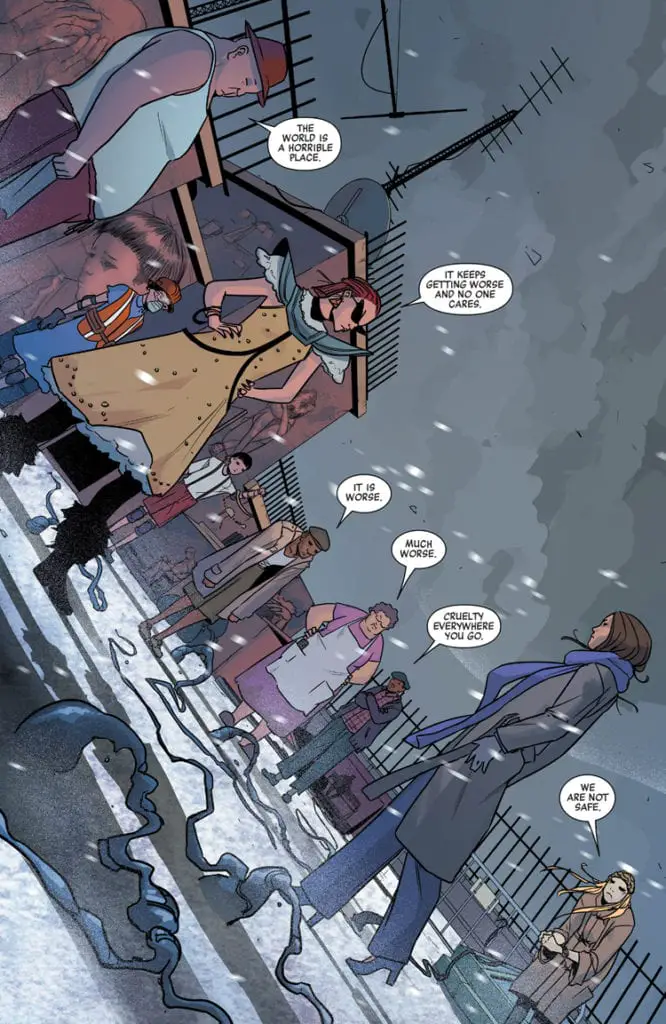
I’m still a fan of the art. It’s clean and pleasant, with a lot of attention to small details like everything that makes Maise’s building and its residents feel so creepy. The color choice is careful as always, and I like that the rooftop scene was so grey-toned. Seems an appropriate choice for the Hulk’s new grey color.
I can’t help but think this story benefits from being in comic book format. Not only for all those bits of information you can convey through visuals alone, but also for the possibility of using narrative resources like flashbacks, narrations, or inner monologue. The exploration of Jen’s trauma could otherwise be too heavy-handed, but the creators know how to use the potential of their medium to ensure an organic and exciting story.
Hulk #5
Writer: Mariko Tamaki
Art: Nico Leon
Colors: Matt Milla & Andrew Crossley
Letters: VC’s Cory Petit

